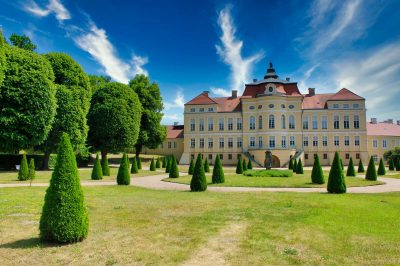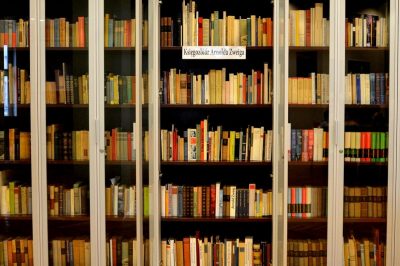County brief | |
|---|---|
Population |
37,9 Mio. |
Area |
312.000 km² |
Form of goverment |
Republik |
Currency |
Złoty |
Capital |
Warsaw |
Official languages |
Polish |
Religions |
Roman Catholic, Polish Orthodox, Protestant |
Country code |
+48 |
National Holiday |
May 3rd (commemoration of the Constitution of 1791), November 11th (Independence in 1918) |
Although Poland shook off the Communist regime, the country is still a great unknown to many people in the west. Most associate Poland above all with the Solidarność union that fought communism, with Pope John Paul II and lately with a relationship with the European Union that is not free of conflict.
Until 100 years ago, the country was divided between Russia, Germany and Austria, which is why its regions have developed very differently. Culturally, there are therefore considerable differences within the country, which make exciting discoveries possible. National minorities such as Silesians in the south of the country and Kashubs in northern Poland also have their own traditions and customs, which contribute to the diversity of Polish culture.
Poland inspires its visitors primarily thanks to its wonderful cities, some of which can look back at a history of many centuries. The capital Warsaw is one of the most dynamic metropolises in Europe and can score points above all with its mix of modern architecture and the unique Old Town, which was rebuilt after the Second World War. In Krakow, the country’s historic capital, however, time seems to have stopped. Gdansk offers its visitors hanseatic Baltic Sea flair, while Wroclaw was European Capital of Culture in 2016. Poznan in the west of the country and Lublin in the east are still little known to tourists, but also have beautiful old towns. Łódź, on the other hand, has long struggled with the decline of the local industry, but is fast developing into a modern, creative city. Olsztyn in the far north of the country is the perfect starting point for exploring the region of neighboring Masuria.
While city tourism has always played an important role, in recent years, more and more people have been drawn to the natural sights of Poland. The country has a diverse natural landscape, with a total of 23 national parks. They range from broad Baltic Sea beaches to the unique Masurian Lake District and the famous Białowieża area, the last primeval forest in Europe. All these beauties are located in the north of the country, but the south also has a lot to offer, especially for hikers: The Bieszczady are, just like the Tatra Mountains in the border area to Slovakia, an offshoot of the Carpathians. The legendary Krkonoše Mountains on the Czech border also invite you to go on extensive tours.
Poland’s culture is mainly known for its music. Representatives such as Frédéric Chopin and Artur Rubinstein enjoy world fame, and the jazz scene is also considered one of the most active in Europe. Painters such as Stanisław Wyspiański and Jan Matejko as well as poets and writers such as Adam Mickiewicz and Henryk Sienkiewicz have also developed their own style, strongly influenced by Polish nature, whose influences can still be felt today.
Come with us on a unique journey to Poland and let the country’s diversity surprise you! On the following pages you will find practical tips for your trip to Poland, exciting background articles and information about the most important sights and regions.

Poland’s vibrant capital city awaits its visitors with an exciting mix of a modern skyline, a wonderfully restored old town and numerous places that recall the city’s eventful past.

For centuries Krakow was the Polish capital and in the hearts of many people it still remains so. A unique old town, protected by UNESCO, the Wawel Castle overlooking the city and a rich Jewish heritage make the Vistula metropolis one of the most popular destinations in Eastern Europe.

Wroclaw is the trendiest of all Polish cities and starts to rival Krakow and Warsaw as a tourist favorite. The common German-Polish heritage and the beautiful old town were the main reasons why Wroclaw was European Capital of Culture in 2016. But also the region of Silesia has its charm. Here creatively redesigned former industrial areas alternate with enchanted castles.

The Polish Baltic coast is over 400 kilometers long. Dream beaches, forests and much Hanseatic flair characterize the region. Above all Gdańsk, but also Toruń, Malbork, Szczecin and the glamorous Sopot attract visitors to the Polish northwest.

Only a stone’s throw from the German border is the cradle of the Polish state. Gniezno and Poznań were the first Polish capitals and have uniquely beautiful city centers. There is no shortage of natural beauties here either. Nevertheless, the region is still considered an insider tip.

The wide strip of land that stretches from the Lithuanian to the Slovakian border still spends an existence in the shadow of Polish big city tourism. But there is a lot to discover with the Białowieża forest and its bisons, the Precarpathians and old Renaissance cities like Lublin and the UNESCO World Heritage Site Zamość.

Masuria is often called the “Land of a Thousand Lakes”. Old castles, forests spared by modern civilization and above all a lot of silence characterize Poland’s northeast with its capital Allenstein on the border to the Russian exclave Kaliningrad.
To prepare your trip even better, we have created a packing list for you. It contains recommendations for things that will make your trip more comfortable and secure.
Finding cheap flights with good connections is not always easy. We are pros at finding the cheapest and best flights. Here we share our experiences with you.
Money withdrawel can be extremely expensive. Especially those who pay a lot with foreign currencies should therefore have a travel credit card, which is free of charge or offers low fees. We tested the best.


